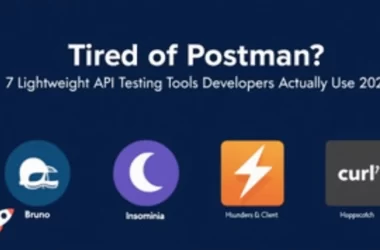Infrastructure Testing: Ensuring a Solid Foundation for Your Applications
Introduction
In today’s dynamic and complex software landscape, infrastructure plays a critical role in the success of applications. Gone are the days when manual server provisioning and configuration were the norm. Infrastructure as Code (IaC) has emerged as a powerful paradigm, allowing us to define and manage infrastructure through code, bringing automation, repeatability, and version control to infrastructure management. However, merely automating infrastructure deployment is not enough. We must ensure that the provisioned infrastructure behaves as expected and meets the defined requirements. This is where Infrastructure Testing comes into play.
Infrastructure Testing is the process of verifying the correctness and stability of infrastructure components, including servers, networks, databases, and middleware. It involves automating tests that validate the configuration, security, and performance of the deployed infrastructure, ensuring it functions as intended. This article delves into the world of Infrastructure Testing, exploring its importance, benefits, popular tools like Test Kitchen, and best practices.
Prerequisites
Before diving into Infrastructure Testing, it’s essential to have a foundational understanding of the following:
- Infrastructure as Code (IaC): Familiarity with IaC tools like Terraform, Ansible, Chef, or Puppet is crucial. You should understand how these tools are used to define and provision infrastructure resources.
- Configuration Management: A grasp of configuration management principles is necessary. You should know how to manage the state of infrastructure components and ensure consistency across different environments.
- Testing Concepts: A basic understanding of testing principles, such as unit tests, integration tests, and end-to-end tests, is helpful.
- Command-Line Interface (CLI): Proficiency with CLI tools is essential for interacting with infrastructure components and running tests.
- Scripting: Knowledge of scripting languages like Bash or Python is useful for writing custom tests and automating infrastructure management tasks.
- Virtualization/Cloud Platforms: Familiarity with virtualization technologies like VMware or cloud platforms like AWS, Azure, or GCP will be beneficial as your infrastructure testing will likely involve these technologies.
Advantages of Infrastructure Testing
Implementing Infrastructure Testing offers a multitude of benefits, contributing to more robust and reliable infrastructure:
- Early Bug Detection: Infrastructure Testing identifies errors and misconfigurations early in the development cycle, preventing costly issues from propagating to production environments.
- Increased Confidence: Testing provides confidence that the infrastructure is functioning correctly and meeting the defined requirements, reducing the risk of outages and performance degradation.
- Improved Consistency: Automated tests ensure that infrastructure configurations are consistent across different environments, minimizing discrepancies and promoting predictability.
- Faster Delivery: Infrastructure Testing enables faster delivery of infrastructure changes by automating the validation process, reducing the need for manual testing and verification.
- Reduced Costs: By identifying and resolving issues early, Infrastructure Testing can significantly reduce the costs associated with downtime, remediation, and performance tuning.
- Enhanced Security: Tests can validate security configurations, ensuring that infrastructure components are protected against vulnerabilities and unauthorized access.
- Compliance: Infrastructure Testing can help organizations meet regulatory compliance requirements by providing evidence of infrastructure integrity and security.
- Improved Collaboration: Infrastructure Testing promotes collaboration between development, operations, and security teams by providing a shared understanding of infrastructure requirements and test results.
- Automated Rollbacks: When tests fail, infrastructure testing tools can be integrated with IaC tools to automatically rollback the changes to a stable state.
Disadvantages of Infrastructure Testing
While offering numerous benefits, Infrastructure Testing also presents some challenges:
- Complexity: Setting up and maintaining Infrastructure Testing environments can be complex, requiring expertise in infrastructure management, testing tools, and scripting.
- Time Investment: Creating and maintaining comprehensive test suites requires a significant time investment, especially for large and complex infrastructure environments.
- Tooling Overload: A wide range of Infrastructure Testing tools are available, making it challenging to choose the right tools for a specific environment and use case.
- Dynamic Environments: Dynamic environments, such as cloud-native applications, can be challenging to test due to their constantly changing nature.
- False Positives: Tests can sometimes produce false positives, requiring investigation and analysis to determine the root cause of the issue.
- Dependency Management: Managing dependencies between infrastructure components and tests can be complex, especially in distributed environments.
- Test Environment Maintenance: The test environments themselves require maintenance and regular updates to reflect the production environments.
Test Kitchen: A Powerful Tool for Infrastructure Testing
Test Kitchen is a popular open-source tool for automating the testing of infrastructure code. It is widely used in conjunction with configuration management tools like Chef, Puppet, and Ansible. Test Kitchen provides a consistent and repeatable environment for testing infrastructure code, helping to ensure that it functions correctly before being deployed to production.
Key Features of Test Kitchen:
- Platform Abstraction: Test Kitchen abstracts away the underlying infrastructure platform, allowing you to test your code on various platforms, such as Docker, Vagrant, AWS, Azure, and Google Cloud.
- Driver Support: Test Kitchen supports a wide range of drivers for interacting with different infrastructure platforms.
- Provisioning Integration: Test Kitchen integrates with configuration management tools, allowing you to use your existing provisioning code to configure the test environment.
- Test Framework Integration: Test Kitchen integrates with popular test frameworks, such as Serverspec, Inspec, and Bats, allowing you to write tests that validate the configuration of the test environment.
- Workflow Automation: Test Kitchen automates the entire testing workflow, from creating the test environment to running tests and destroying the environment.
- Parallel Execution: Test Kitchen can run tests in parallel, speeding up the testing process.
- Plugin Architecture: Test Kitchen has a plugin architecture, allowing you to extend its functionality with custom drivers, provisioners, and verifiers.
Example using Test Kitchen and Serverspec (with Chef)
Let’s look at a basic example using Chef and Serverspec to test if nginx is installed and running:
-
Install Test Kitchen and necessary gems:
gem install kitchen gem install kitchen-vagrant gem install kitchen-dokken #If using Docker gem install serverspec -
Create a Chef cookbook (e.g.,
nginx) with a recipe to install nginx:# recipes/default.rb package 'nginx' do action :install end service 'nginx' do action [:enable, :start] end -
Create a
.kitchen.ymlfile in your cookbook directory to configure Test Kitchen:--- driver: name: vagrant provisioner: name: chef_solo verifier: name: inspec # Use inspec platforms: - name: ubuntu-20.04 suites: - name: default run_list: recipe[nginx::default] # Specify the default recipe verifier: inspec_tests: - test/integration/default -
Create an Inspec test (
test/integration/default/default.rb):describe package('nginx') do it { should be_installed } end describe service('nginx') do it { should be_running } it { should be_enabled } end describe port(80) do it { should be_listening } end -
Run Test Kitchen:
kitchen converge #Create instance, install Chef, run recipes kitchen verify #Run Inspec tests kitchen destroy #Delete instance when testing is complete
Conclusion
Infrastructure Testing is an essential practice for ensuring the reliability, security, and performance of modern applications. By automating the validation of infrastructure code, organizations can reduce the risk of errors, improve consistency, and accelerate the delivery of infrastructure changes. Tools like Test Kitchen provide a powerful and flexible framework for implementing Infrastructure Testing, enabling teams to build more robust and resilient infrastructure. While challenges exist, the benefits of Infrastructure Testing far outweigh the costs, making it a critical investment for organizations seeking to optimize their infrastructure management practices. Implementing Infrastructure Testing will undoubtedly lead to more confident deployments and a more reliable foundation for your applications to thrive.





